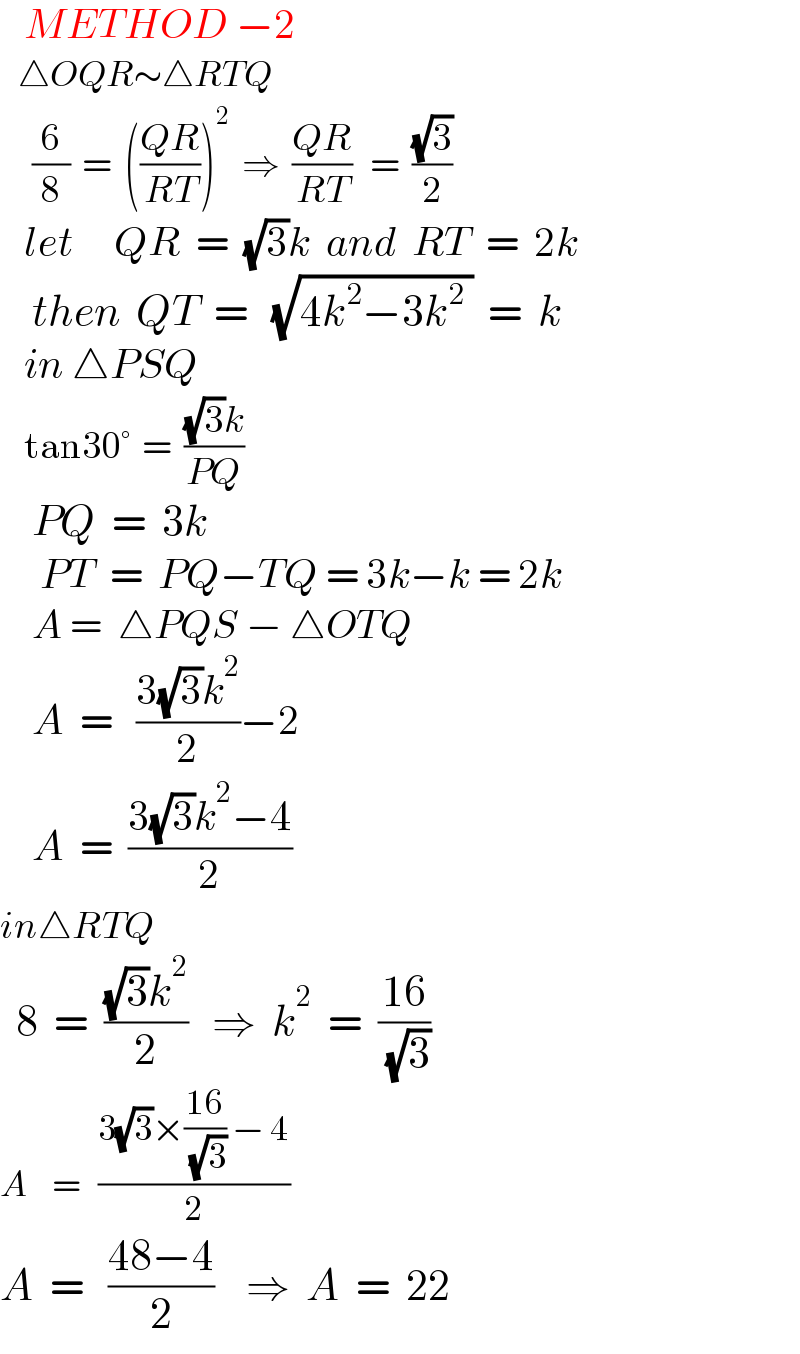
Question and Answers Forum
Question Number 172453 by mr W last updated on 27/Jun/22

Commented by infinityaction last updated on 27/Jun/22

Commented by mr W last updated on 27/Jun/22

Commented by infinityaction last updated on 27/Jun/22

Commented by infinityaction last updated on 27/Jun/22

Commented by mr W last updated on 27/Jun/22

Commented by infinityaction last updated on 27/Jun/22

Answered by mr W last updated on 27/Jun/22

Commented by mr W last updated on 27/Jun/22
![ΔEFB∼ΔBFC∼ΔCFD (((BF)/(EF)))^2 =(([ΔBFC])/([ΔEFB]))=(6/2)=3 ⇒((BF)/(EF))=(√3) ((CF)/(BF))=((BF)/(EF))=(√3) ((CF)/(EF))=((CF)/(BF))×((BF)/(EF))=(√3)×(√3)=3 (([ΔCFD])/([ΔEFB]))=(((CF)/(EF)))^2 =3^2 =9 S=[ΔCFD]=9×[ΔEFB]=9×2=18 T+2=S+6=18+6=24 ?=T=24−2=22 ✓](Q172470.png)
Commented by infinityaction last updated on 27/Jun/22

Commented by mr W last updated on 27/Jun/22

Commented by infinityaction last updated on 27/Jun/22

Commented by Tawa11 last updated on 28/Jun/22

